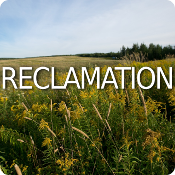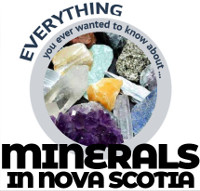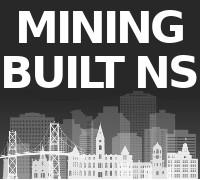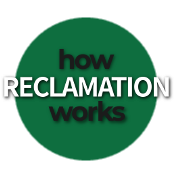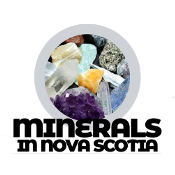- Why Mining Matters
- Jobs
- Safety
- Environment & Operations
- FAQ
- Links
- Fun Stuff
You are here

Shad Bay Treasure Hunt
Montague 1937 Accident
Father Lanigan’s “Prospect”
George V. Douglas
The Stewart Brothers
Goldboro
Moose River's Touquoy Mine
Camerons Mountain
Jim Campbells Barren
Stanburne's Puzzling Gold Mine
Pockwock
Beaverbank Lake
Banook Mining Company
Deep Gold Mining
Wellington
Arsenic and Gold
Dynamite
War of Words
King of the Klondike
Oliver Millett
Kempt Gold Mining Company
Carleton
The Memramcook Fiasco
Love and Gold in Oldham
Montague 1893 Disaster
Central Rawdon Consolidated Mines
Cochrane Hill
Amateurish Early Gold Mining
Sable Island Gold
The Sea Wolf
Trueman Hirschfield
Alexander Heatherington
Prospector Joe Cope
Killag Quicksand
George W. Stuart
Wellington
Billy Bell
Cooper Jim Mine
South Branch Stewiacke
Walter Prest
Lake Charlotte
Acadia Powder Mills Company
The Ovens Anticline
Moose River Anticline
Avon Mine Explosion
Montague
Waverley Claims Dispute
Avon River
Moose River Disaster
Mooseland Scam
New York and Nova Scotia Gold Mining Company
Rosario Siroy and the South Uniacke Gold District
Blockhouse
Killag Gold District
Miller Lake
Baron Franz von Ellershausen
Mooseland: Nova Scotia’s first Gold Discovery
United Goldfields of Nova Scotia
Pleasant River Barrens Gold District
Lochaber Gold Mining Company
Rawdon Gold Mines
MacLean Brook
Gold in Clayton Park?!
Forest Hill
Meguma vs. Placer Gold
Uniacke
Voglers Cove
Gold River
Moosehead
Goldenville
Westfield
Indian Path
Harrigan Cove
Centre Rawdon
Nova Scotia’s Gold Mining History
Tangier Gold District
WWII Gold
Middle River Gold District
Early Gold Discoveries
Halifax 1867
Paris Exhibition 1867
Mining and Tourism
An Act relating to the Gold Fields
Molega Gold District
Brookfield Gold District
Gays River
Halifax Gold
Caribou Gold District
Renfrew Gold District
Oldham Gold District
Whiteburn Gold District
Country Harbour Mines
Waverley Gold District
Blockhouse Gold Mine
Robert Henderson and Klondike Gold
George Mercer Dawson
Cow Bay Gold District
Lake Catcha Gold District
Wine Harbour Gold District
Tangier Gold District
Nova Scotia has 64 historical gold districts – areas in which gold exploration and/or mining took place in the 1800s and 1900s.
Establishing gold districts allowed the government to administer provincial mineral rights. It also helped avoid the crime, violence and disease that accompanied gold rushes in California (1848) and Australia (1851) by establishing a legal process for staking claims and managing the areas.
Some Nova Scotia gold districts saw a lot of mining but many saw very little.
The Tangier gold district was one of the first established. Gold was discovered there in 1860 and over 600 miners and prospectors arrived in the Tangier area within a year. Government officials laid out mining lots approximately 16 metres wide by 7 metres long along the strike of the veins known at that time. This led to excavation of 114 shafts averaging 22 metres in depth.
Recorded gold production started in 1862 and continued almost every year until 1918. 29,360 ounces of gold were recovered in total.
A lot of gold was lost to the tailings due to the lack of sophistication in processing at the time. It’s estimated that only about 50% of gold was recovered from the ore.
Sometimes mined gold didn’t even make it out of the mine! In 1936, a piece of gold quartz the size of an apple, which contained 20 ounces of gold, was found in a waste rock pile inside the Kent Shaft. Today, those 20 ounces would be worth about $30,000. A number of other nuggets ranging from 1/2 to 4 ounces were also found in this discarded rock.
In contrast, modern mining is a science- and technology-based business. For example, Moose River, one of the most efficient and lowest-cost gold mines in the world, is extracting tiny, often microscopically-small flecks of gold from rock. It's also cleaning up historical tailings.
You can learn more about Nova Scotia's gold districts at http://novascotiagold.ca/…/explo…/carte_dor-gold_map-eng.php


